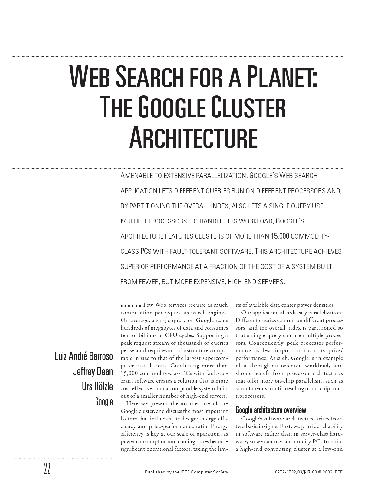Uta Kohl0521843804, 9780521843805, 9780511367441
Table of contents :
Cover……Page 1
Half-title……Page 3
Title……Page 5
Copyright……Page 6
Contents……Page 7
Preface and acknowledgments……Page 11
Table of cases……Page 13
France……Page 20
United Kingdom……Page 21
EC Directives and Regulations……Page 22
Treaties, Protocols, Model Laws and Declarations……Page 23
A. A story about eggs……Page 25
B. Mapping the legal landscape……Page 27
C. Who cares?……Page 30
D. A conservative approach……Page 35
A. Jurisdiction……Page 37
B. Public law versus private law……Page 43
C. The quest for the perfect link……Page 44
A. Territoriality: country-of-origin and country-of-destination……Page 48
B. The Achilles’ Heel: limited enforcement jurisdiction……Page 50
C. More global law or a less global internet: a simple choice……Page 52
D. Code: a separate option?……Page 54
1. National trademarks versus international domain names……Page 57
A. The qualitatively new legal problems……Page 59
B. The quantitatively new legal problems……Page 61
C. The severity of the problems……Page 63
A. Legal reasoning……Page 65
B. Judicial reasoning: continuity and change……Page 67
C. Legislative justification: change and continuity……Page 69
A. Is a website enough? Two schools of thought……Page 71
B. Conservatism: a mere result of the judiciary’s limitations?……Page 76
C. The best solution versus the least disruptive solution……Page 80
5. Law as an engine of, or brake on, change……Page 82
A. The floodgates argument……Page 83
B. The futility argument……Page 86
C. The cautious way forward……Page 88
1. Contract law: unaffected by online transnationality?……Page 90
A. Evolution of law versus the tipping point……Page 93
B. Substantive justice versus formal justice……Page 95
A. Adjudicative jurisdiction in consumer contracts: no gain without pain……Page 98
B. Pre-Internet refinements……Page 103
C. Internet refinements……Page 106
A. Criminal jurisdiction……Page 111
The objective territoriality principle……Page 113
The ‘reasonable’ effects doctrine……Page 115
Return to a ‘crude’ effects doctrine……Page 118
C. Internet developments……Page 120
The possibility of concurrent jurisdiction……Page 126
Insistence on enforcement jurisdiction……Page 128
Lack of international consensus: moral and cultural values……Page 131
5. The better path?……Page 132
1. Notice of foreign legal obligations……Page 135
A. Foreseeability and the rule of law……Page 139
B. Absence of noticeable borders in cyberspace……Page 141
C. Actual access, even if minuscule……Page 143
D. Foreseeability of foreign law in respect of freely accessible sites……Page 149
Foreseeability of all destinations……Page 151
Foreseeability of foreign harm……Page 153
Foreseeability of specifically targeted destinations……Page 158
E. Two destination principles: their flaws and merits……Page 162
A. Common rules but multiple interpretations……Page 165
B. Foreseeability and the territoriality principle……Page 167
C. Foreseeability of all destinations……Page 169
D. ‘Reasonable foreseeability’: some conclusions……Page 173
A. Actual notice and the effectiveness of law……Page 177
B. Traditional methods of publication of law……Page 181
C. The failure of traditional methods in the online world……Page 183
5. An afterthought……Page 187
1. The exclusive country-of-origin approach……Page 188
Netherlands and Germany……Page 191
European Union……Page 192
United States……Page 193
WTO and GATS……Page 195
Australia……Page 197
New Zealand……Page 198
The UK Gambling Act 2005……Page 199
Loss of economic rewards……Page 200
Forum-shopping and the race to the bottom……Page 202
Shift of regulatory burden……Page 205
No protection from harmful foreign content……Page 206
The special case of the Electronic Commerce Directive……Page 208
A. Lack of cooperation in non-harmonised public law……Page 214
B. The UK and Australia: good neighbours……Page 217
4. An example to follow?……Page 221
1. Limited enforcement power: a blessing in disguise……Page 223
A. Enforceability, not enforcement, matters……Page 227
B. ‘Voluntary’ compliance without the threat of enforcement……Page 230
C. Enforceability and why it really matters……Page 231
A. Cooperation in private law……Page 234
Cooperation and regulatory restraint……Page 236
Two interpretations of the ‘public policy’ exception……Page 238
The ‘public law’ taboo……Page 242
Lack of power or lack of will?……Page 245
Symbolic prosecution without enforcement……Page 249
Imposition of penalty on related local persons……Page 250
Analogous prohibitions imposed on local intermediaries and end-users……Page 251
Prohibition of supportive services by local actors……Page 252
Blocking of foreign illegal content……Page 253
4. The public-private law dichotomy and its lessons for cooperation……Page 254
A. ‘Public’ and ‘private’ international law……Page 255
B. The public-private law spectrum……Page 257
C. Underlying concern: foreign State interest and involvement……Page 262
Public versus private complainants……Page 264
Public versus private cause of action……Page 266
Public versus private remedy……Page 269
The paradox……Page 272
5. The future of cooperation……Page 275
1. The hidden choice……Page 277
2. More global law……Page 282
A. Harmonisation of competence rules?……Page 283
B. Substantive harmonisation by design……Page 286
Harmonisation through treaty……Page 287
Harmonisation through deregulation……Page 289
C. Substantive harmonisation by default……Page 294
The country-of-destination approach……Page 295
The country-of-origin approach……Page 299
A. Zoning in the country of origin……Page 302
B. Zoning in the country of destination……Page 307
4. Making the choice: a value judgment……Page 311
Bibliography……Page 315
Index……Page 336







Reviews
There are no reviews yet.